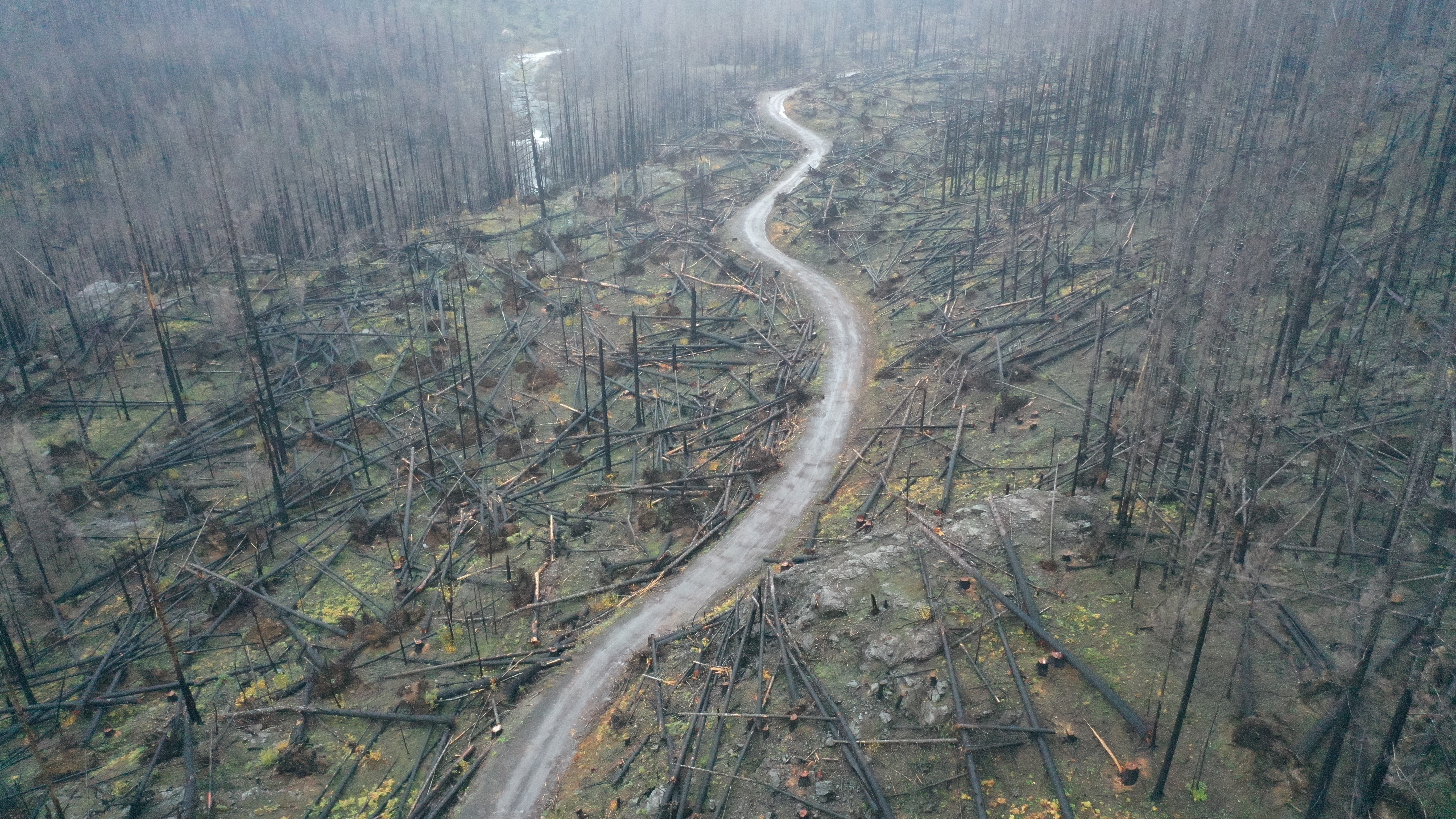
An aerial image made by drone shows cutting alongside Road 2209 in the Willamette National Forest on Thursday, Nov. 4, 2021.
Courtesy of Green Oregon
A federal judge has ordered an immediate stop to a U.S. Forest Service plan to log along more than 400 miles of roads within the Willamette National Forest.
U.S. District Judge Michael McShane said in an order issued Friday that the federal agency overstretched its authority under the National Environmental Policy Act, or NEPA, to effectively log some 20,000 acres of forestland in the name of post-fire road repair.
“This Project allows commercial logging that, at least at this stage, will almost certainly have more than a minimal impact on the environment,” McShane wrote. “The commercial logging allowed here does not remotely resemble grading or repaving roads, cleaning culverts, or removing brush [without the use of herbicides] near roads.”
The Forest Service crafted the project in the wake of the 2020 Labor Day wildfires that ripped across Oregon. The agency argued that the Beachie Creek, Lionshead and Holiday Farm fires created dangerous conditions on forest roads that required extensive clean-up in the form of cutting trees.
Using what’s called a “categorical exclusion” in NEPA, the Forest Service planned to bypass the thorough environmental review processes typically required by the law. However, the plan would need to have little to no impact on the environment for the exclusion to apply.
Three conservation groups sued, saying the project was large-scale salvage logging in disguise, and that it would degrade water quality and wildlife habitat. McShane agreed, and issued an injunction to halt the project, which was scheduled to begin Sunday.
“The judge granted what we asked for, which we have been asking the Forest Service for since the beginning, which was a project that just targets imminent danger trees and is not a large-scale commercial salvage logging project,” said Nick Cady, legal director for Cascadia Wildlands. The conservation group was a plaintiff alongside Oregon Wild and Willamette Riverkeeper.
The Forest Service did not immediately respond to a request for comment.
The American Forest Resources Council, which lobbies on behalf of the timber industry, says leaving the trees standing poses a safety risk for people who are in the forest for work or recreation.
“People shouldn’t have to risk death or injury to access their public lands,” the group said in a written statement. “Failure to remove hazard trees ensures dangerous conditions for firefighters, first responders and anyone traveling through these burned landscapes.”
The judge’s order allows the Forest Service to cut trees that pose a direct threat to roads, so that access may be maintained. But in his ruling McShane wrote that many of the trees the agency hoped to cut don’t fit that description.
“[T]he Project allows the felling of a ‘large number of trees’ with ‘a low likelihood of failure within 5 years,’” McShane wrote. “Generally, an agency must complete an [environmental assessment] within 1 year and an [environmental impact statement] within 2 years. In other words, the Forest Service could complete a [National Environmental Policy Act] analysis several years before many of the trees are likely to fail.”
McShane also noted that the conservation groups have a high likelihood of success in proving their claims in court.

